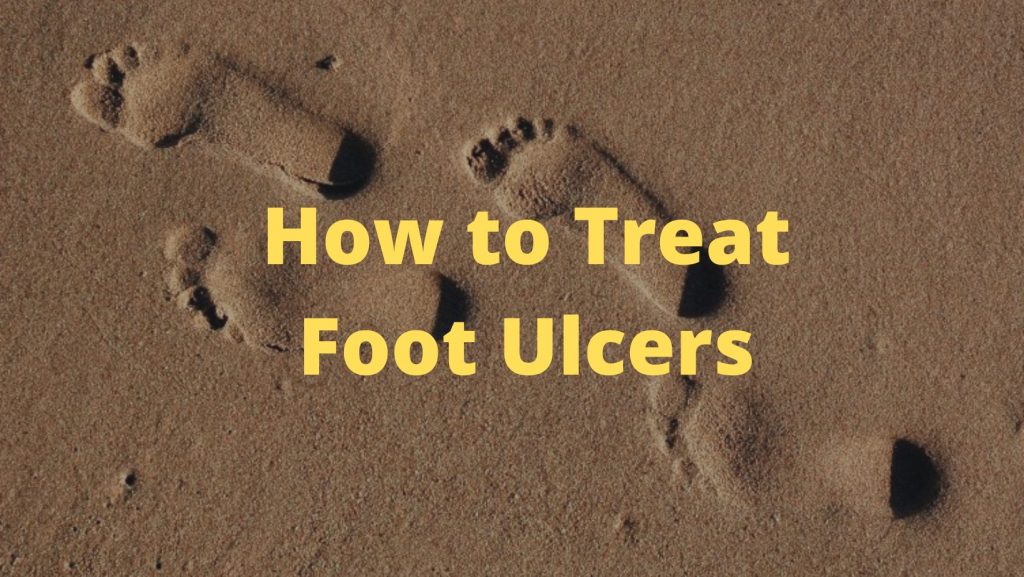
The most common complication when dealing with diabetes is having a foot or leg ulcer and there is not much you can do with just normal diet, exercise and insulin therapy. Usually people with foot ulcers have poor blood circulation, high blood sugar, nerve damage, and small opening of a wound that grows due to poor tissue repair exposing layers underneath. People with diabetes have a high chance of developing a foot ulcer, but with proper care and treatment, you can prevent one from developing or if already developed, prevent it from getting worse. There are a number of ways to treat a foot ulcer that will be outlined below.
According to the American Podiatric Medical Association, about 15 percent of people with diabetes will suffer from a foot ulcer. Of those, approximately 14 to 24% of those people will require an amputation because of the severity and late treatment of their foot or leg ulcer. That’s a whopping estimate of 273,000 to 490,000 people just in the state of California.
Ways to Treat Foot Ulcers
If you are currently experiencing a foot ulcer or think you have a foot wound while diabetic, then it’s important to seek professional care as soon as possible. This is not a normal wound you can treat at home as foot ulcer’s go past skin level where you need a professional Podiatrist to treat the wound and see if there are any complications such as infection. The faster you get professional help, the more chances you have in treating your wound. Regular family doctors will usually refer patients with foot ulcers to a professional wound care center where they specialize in foot wounds such as a foot ulcer. A diabetic wound care specialist in California, such as the Wound Institute of America, can provide the most advanced diabetic wound treatment with the latest wound care technology. Your primary doctor can provide a referral for your treatment to be continued at a professional center.
Wound Care Centers Can Help Foot Ulcer Patients With:
- Debridement: An innovative way to heal ulcer wounds is to remove dead skin and tissue around the wound for the body to continue healing the infected area.
- Wound Offloading: the best thing to do for a wound is to remove any excess weight and pressure to allow healing. This can be done with wheelchair use, crutches and specialized medical foot gear.
- Wound Dressing: There are specialized wound dressings that can go over the wound to heal with either special healing collagen or antibiotic medication to prevent infection. This will be wrapped within every visit to a wound care center.
- Hyperbaric Oxygen Therapy: One of the most highly underrated wound care treatments out there is hyperbaric oxygen therapy. Hyperbaric oxygen therapy is exactly what you hear, oxygen therapy while in a chamber. This is a normal use for foot ulcers and it is shown to heal wounds at a rate of 80% faster than regular treatment. Inside a Hyperbaric chamber you take in 100% oxygen towards the areas in your body that are oxygen deprived and help your body heal at a faster pace because of the oxygen concentration. This treatment also helps kill bacteria in these infected wounds.
- Wound Surgery: You can close the wound with surgery and improve blood flow to the area of any damaged veins or arteries with surgical revascularization.
Causes of Diabetic Foot Ulcers
In reality, anyone with diabetes can eventually develop a foot ulcer. An ulcer, being an open wound on the skin, can become worse if not properly treated early as many have to unfortunately amputate their leg because of this. There are people with diabetes that are still living healthy normal lives with a couple of step backs but do not have to go through the pain of an ulcer and there are ways to improve that with good exercise, diet and proper care of your body. Common causes after diabetes include poor circulation, prior disease, poor nerve damage of legs, foot deformities, pressure on feet, and trauma.
How Do I Know I Have a Foot Ulcer?
The first and foremost symptom when looking at a wound would be the instinct of having pain, but that’s not true for a foot ulcer. People who develop foot ulcers usually lose their ability to feel pain in the area as there are low levels of circulation and nerve endings in the area to feel pain.
Common Foot Ulcer Symptoms Include:
- Drainage on your socks
- Redness
- Swelling
- Itching
- Skin color change
- Rash
- Scaly skin
As always, it’s best to see your primary care physician if you feel or are concerned about your health, especially if you’re currently diabetic.
Preventing a Diabetic Foot Ulcers
Since more than half of diabetic foot ulcers get infected according to the New England Journal of Medicine, it’s important to be very vigilant in caring for your body. As always for any diabetic person, you should always manage your blood glucose levels and make sure blood sugar is stable. To be extra careful, we suggest the preventable measures below:
- Take care of any cuts or wounds early before it gets infected
- Wash your feet every other day
- Keep feet dry and moisturized
- Keep toenails trimmed and keep good hygiene
- Change socks everyday
- Wear comfortable shoes
- Never walk barefoot outside
- Avoid alcohol and tobacco use
It’s extremely important for those with diabetes to regularly check with a primary care physician and check feet for any sores or irritation. The best way to treat foot ulcers is treating it at first sight.
Finding the Best Treatment for a Diabetic Foot Ulcer
You’re probably wondering if a person who has no history of diabetes is likely to have a foot ulcer and the answer is yes, it’s possible. It’s important to contact a health professional no matter your current health condition as you do not want symptoms to get worse.
The Wound Institute of America is ready to accept new patients who want to have professional wound care from the number one wound care center in California. To make an appointment with Wound Institute of America or to learn more about your foot ulcer, call (310) 919-4179. You can also learn more about foot ulcers and other wound care treatments on our website here.




